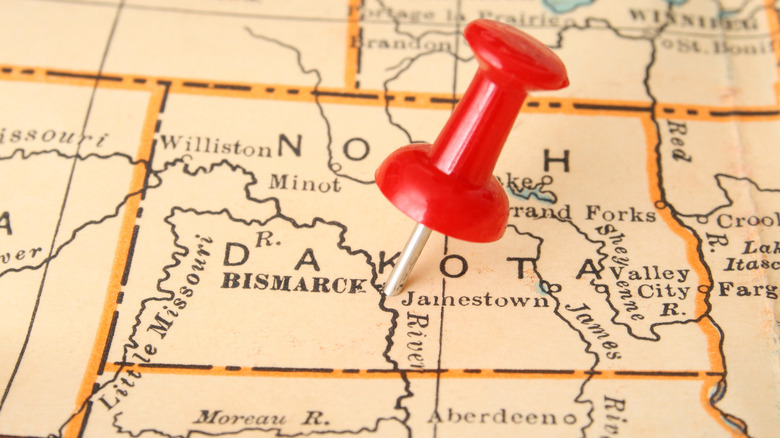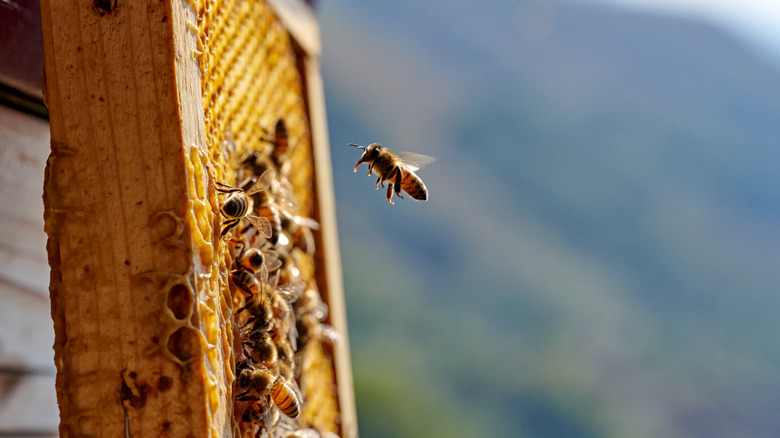The Unexpected Crop North Dakota Produces More Than Any Other State
North Dakota is the surprising state that produces the most honey in the country. In fact, the state has been the nation's top honey producer since 2003. The U.S. Department of Agriculture (USDA) revealed that in 2023, North Dakota alone made 38.3 million pounds of sticky honey. For context, that amounts to a value of $67.8 million for this golden crop. States that follow behind North Dakota for honey production include California (11.6 million pounds per year), Texas (8.3 million pounds), and Montana (7.5 million pounds).
The history of honey bees in North Dakota follows an interesting journey. After being transported by colonists, honey bees made their first appearance on the East Coast in 1622. Eventually, North Dakota proved itself to be the optimal destination for producing honey thanks to its low human population and wide, open grasslands. With less agriculture, and therefore fewer pesticides, North Dakota is an ideal home for bumbling honey bees. Today, the state has comfortably solidified its position as a honey-making cornerstone of the U.S. with around 65,000 bee colonies at the beginning of 2024. Whether you're upgrading your garlic bread with this sweet pantry staple or looking for new ways to use fermented honey garlic, you likely have North Dakota to thank.
Why is North Dakota the leading honey-producing state?
The environment plays a huge role in North Dakota's success in making large amounts of honey. The state's balance of warm days with a drop in temperature at night in the summer promotes nectar secretion, which helps these little pollinators produce honey. However, the winters here are challenging. During the colder months, beekeepers will usually relocate their bees to warmer climates to prevent the freezing weather from affecting the bees — but this benefits the surrogate states with an influx of pollinators.
North Dakota is also full of open spaces, which further increases the bee population's honey production. Because North Dakota hasn't seen the same spike in land development with an emphasis on farming soy and corn, pesticides — which may contribute to a decline in honey bee populations — are fewer. This, coupled with the fact that North Dakota beekeepers must abide by certain regulations and licenses also keeps the bees, apiaries, and ultimately the honey of the highest quality possible — but this also means that it's easy to search the state's license registry to find if there is an apiary nearby, allowing for farmers to check before spraying pesticide.
The native flora has much to do with the honey production in North Dakota too. The state offers quite an array of pollinator-friendly plants such as blanketflower, showy milkweed, wild columbine, anise hyssop, and smooth blue aster, all of which are frequented by honey bees. The wildlife plays a big role in the conditions needed for the perfect jar of North Dakota-made honey. Of course, more honey options means more reason to experiment with new ways to grill with honey at your next barbecue or give your grilled fruit a flavorful kick.


